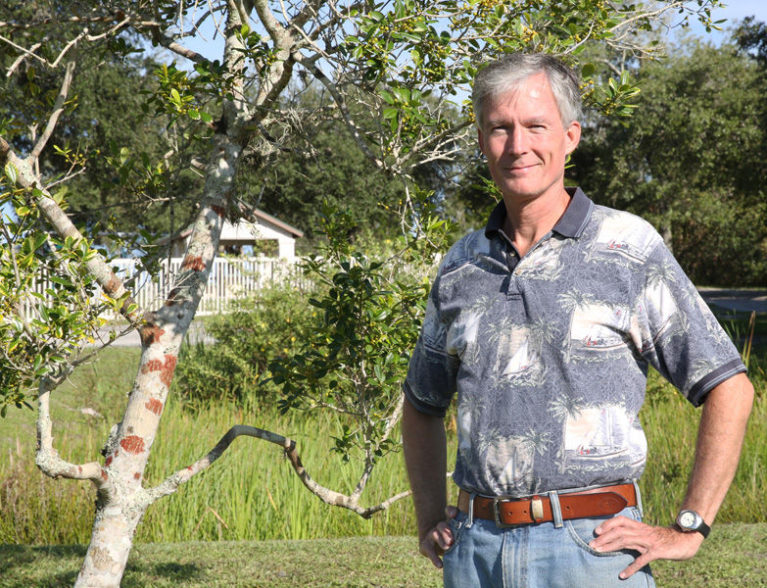
SEBASTIAN — As it celebrates its 25th anniversary, the nonprofit organization Friends of the St. Sebastian River is digging in and renewing its efforts to maintain and improve the health and beauty of the river and its watershed, protecting not just the river but the extraordinary lagoon into which it flows.
Group president Tim Glover says the St. Sebastian River, the Indian River Lagoon’s only natural tributary, is on the state’s list of imperiled waterways, categorized as a recreational body, “fishable, swimmable but not drinkable.”
This vulnerable, often hidden, little stream is home to threatened wildlife, provides spawning grounds for local game fish and is critical to maintaining our aquifers for drinking water and irrigation.
Renowned Marine biologist Dr. Grant Gilmore calls the St. Sebastian River valuable and unique.
With the current spotlight squarely focused on the endangered Indian River Lagoon, the dedicated all-volunteer organization is seeking a more visible presence in order to create awareness of the crucial need to preserve all the area’s water systems.
Glover explains that the St. Sebastian watershed is much broader than most people realize, and includes northern Indian River County on its south prong, southern Brevard County via the North Prong, and parts of both counties to the west, via the C-54 Canal.
The Friends are closely watching the current battle between Florida and the EPA, says Glover, explaining that the Environmental Protection Agency is preparing to restore safeguards in the Clean Water Act of 1972, bypassed for years through a loophole that increased the risk of destructive pollution for many of the state’s vital waterways.
The state is pushing back, maintaining the EPA regulations are too strict.
The Friends have been fighting such threats to the river since being incorporated in 1989: The group was largely responsible for the removal of a dairy farm adjacent to the south prong of the river that was a source of nutrient-laden water that caused pollution and degradation of the river, and it successfully advocated for the Barefoot Bay wastewater treatment facility’s compliance with water quality standards.
It was instrumental in banning airboats from operating on the river and in the creation of the 22,000-acre St. Sebastian River Preserve State Park (AKA Buffer Preserve).
The group successfully advocated to set slow boat speeds throughout the entire river to protect wildlife and the shoreline, pushed for the dredging of muck that contaminated the river habitat, and helped the Marine Resources Council remove invasive Brazilian Pepper trees from the river habitat.
For a couple of years now, said Glover, the group has been working on a major research project, gathering information about the riverine environment and the lives of the people who have lived along its banks and within its watershed.
“We want to become a repository for the history of the river,” he said, adding the project is growing exponentially, with every name or piece of information leading to additional information.
Friends of St. Sebastian River often works in conjunction with other environmental groups, such as the Pelican Island Audubon Society and the Indian River Land Trust, with a focus on conservation and education.
A Nov. 14 fundraising yard sale/family event at Dale Wimbrow Park will support scholarships for Sebastian River High School students who have shown an interest in volunteering to help the environment.
The group meets the fourth Tuesday of each odd month, and is seeking new members who share a similar its concern for the small, beautiful river.
“We’re always looking for volunteers,” says Glover. He can be reached at 772-589-0636.



